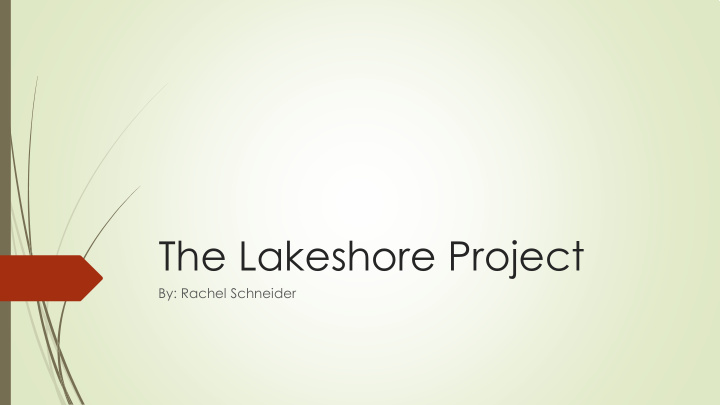



The Lakeshore Project By: Rachel Schneider
The Lakeshore Preserve The area consists of a prairie, woodlands and multiple wetlands. Throughout the years different groups have been working to restore these sites to their more natural habitat In the prairie they do controlled burnings to clear out the dead material and make way for the new vegetation
Isolation of new strains Wild YEAST program for collecting in the United States Undergraduate driven research to isolate yeast from wild environments Capture greater diversity of yeast through isolation at multiple temperatures We also do environmental sequencing which goes straight into sequencing and bypasses the enrichment and isolation steps of the protocol Sample Enrich Isolate Extract DNA Amplify barcode region Sequence Identify Isolation protocol: Sylvester et al FEMS 2015
Our Findings Originally we had predicted that there would be a drop in the number of species found throughout the preserve in the winter Surprisingly as you can see in this graph the species count in the woodland spiked in the winter months
Our Findings As you can see from the heat maps of all three ecosystems in the lakeshore preserve there are some species we have isolated a lot Our top three species isolated are Kluyveromyces lactis , Cyberlindnera saturnus and Candida pseudolambica This leads us to believe that these strains may be more robust and able to handle different environments better than other species Yet it was still very surprising to me that we managed to isolate as many different species from the preserve as we did
Martins’ New Species Martin Jarzyna another undergrad in the Hittinger Lab conducted the first year of this study From his samples he has isolated a novel species Now he is currently working on describing it
Where the Project is Now Currently myself, Martin and other undergrads are continuing to grow up and isolate yeasts from the lakeshore samples At this point we have 93 potential new Saccharomycotina yeast species There are still hundreds of samples we have yet to sequence and identify
What’s Next There are many species remaining that we have sequenced but the scores fell into a range that we consider to be not a good enough match We then take those species and run a D1/D2 test on them to determine if they maybe novel species candidates
My experience I have been involved in the Lakeshore Project since I joined the Hittinger Lab in February of last year At first it seemed like a daunting project to take on But through my initial experience and very personal experience thanks to the scholarship I received, I have learned so many invaluable skills both in the lab and in the field.
My experience This opportunity to be a part of a longitudinal study was really unexpected and is greatly appreciated I would like to give a big thank you to the Lakeshore Preserve for giving me such an extraordinary opportunity so early in my research career. Also a huge thanks to everyone in the Hittinger Lab who has been a part of this wonderful project
Thank You
Recommend
More recommend